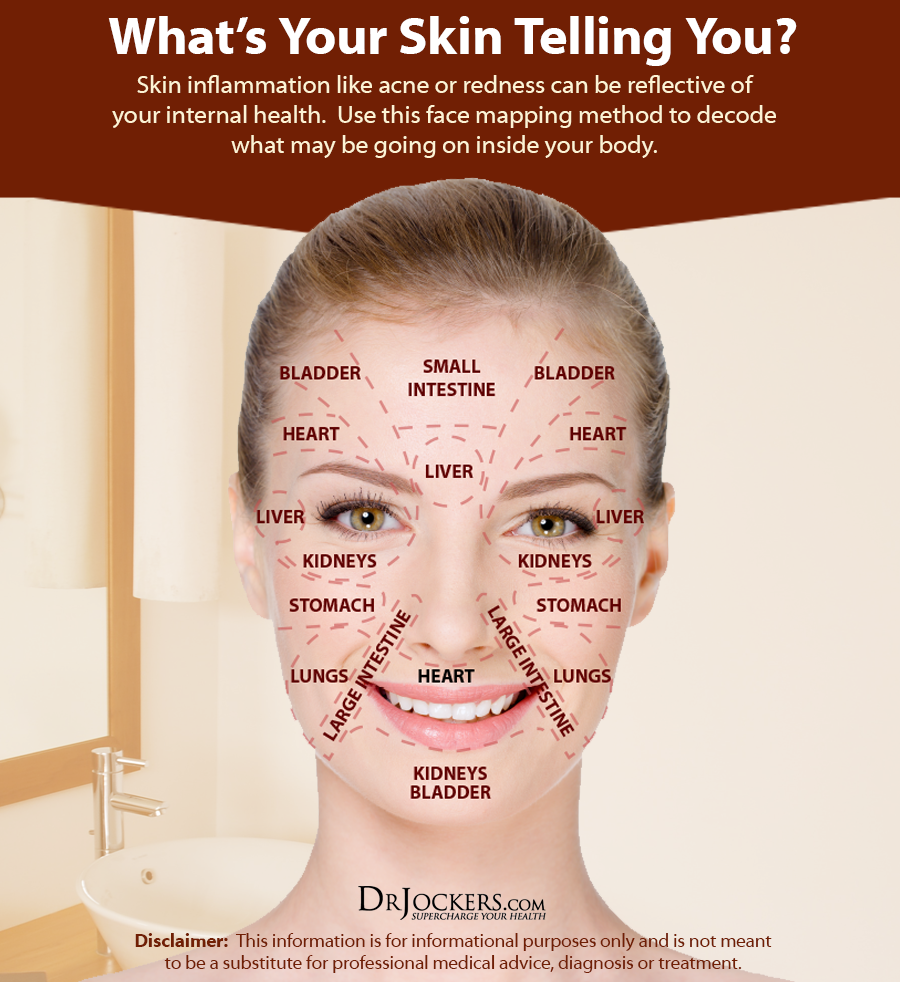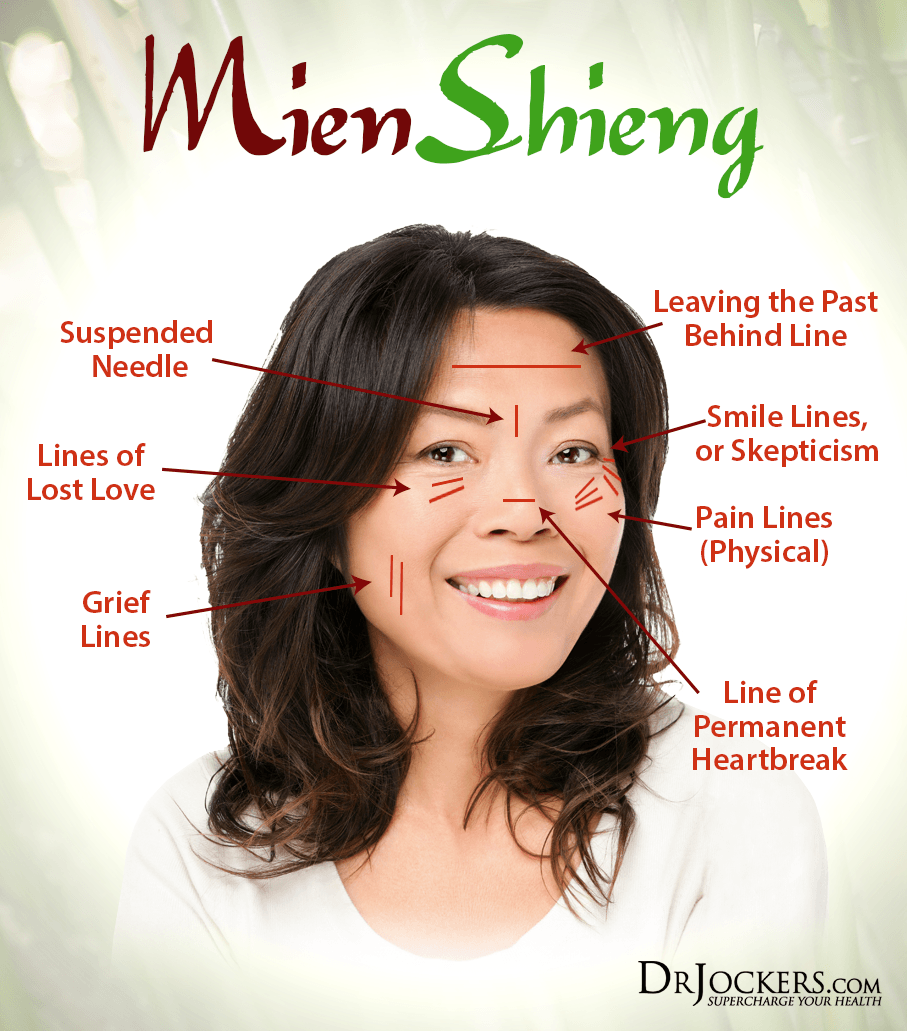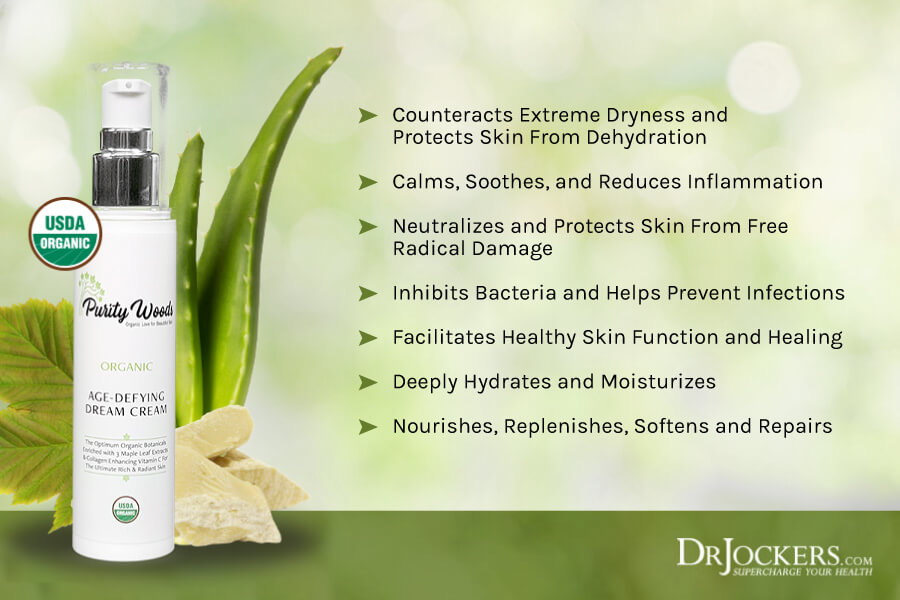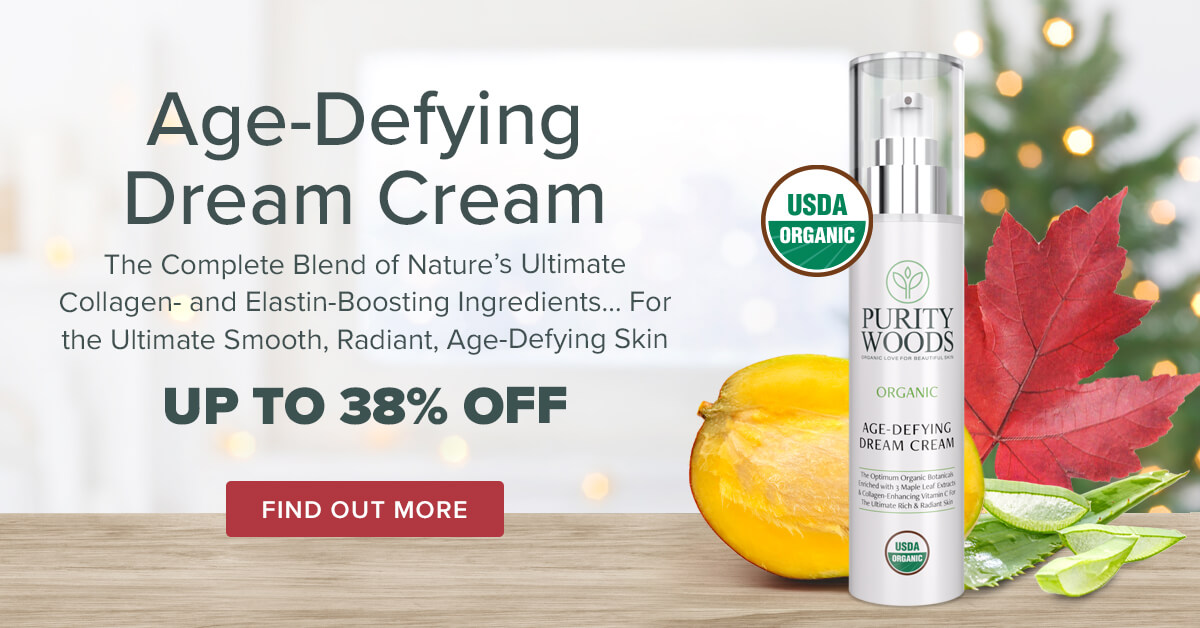What Is Your Facial Health Saying?
Did you know that your face can reveal signs of health issues you might be having? An ancient Chinese medical practice known as mien shiang, or better yet as “face reading,” is a practice that began more than 3,000 years ago (1). So, what does your facial health say about you?
As a Christian, I believe it is wise to learn practical and useful tools and strategies from the cultures and faiths around us that don’t clearly clash with the values I believe in and uphold. Facial reading is a perfect example of this, and as a clinician, it gives me a helpful assessment.
In fact, we have all used this practice in one way or another in the past. For instance, have you ever felt an attraction towards one person’s smile or believed that the salesperson at your door had a trusting face? Have you ever placed a verbal bet on a fighter before a match in wrestling or boxing because one had meaner eyes, a threatening grimace, and an overall biased fighter’s face?
Embracing the understanding of mien shiang, the face is a reflection of your life’s history, including past obstacles you have overcome and joys. It is more than a gut reaction to someone’s facial expressions and can offer a significant insight into one’s health. So rather than covering up those lines, hiding those spots, and using makeup to reconfigure the appearance of your face, first seek to learn if these markings pose a greater threat to your harm than the appearance of a wrinkle.
Facial Reflection
The face is broken up based on its shape, sides of the face, and zones with 12 distinguishing facial features, such as hairline, brow bones, chin, and jaw. Markings typically first appear on the forehead and migrate downwards with age. Changes in size, color, placement, and depth are varied and can reveal a person’s personality, including their ability to handle anger. (3)
Consider the following example as one way to analyze a person’s possible struggles by reading the forehead:
1 vertical line: not easily angered
2 vertical lines: angered easily
3+ vertical lines: withstands self-defense appropriately during argumentation
Although we often find ourselves fixating on the lines on our face as a reflection of our age, researchers have found that facial skin health runs much deeper than what is visible to us. By analyzing participants’ faces in photography, they found several health links associated with facial pigmentation and skin quality.
Skin Coloration:
The attractiveness of males and females to another person’s skin color has long been recognized and analyzed in clinical studies. This preference for facial attractiveness may be an innate human instinct we are designed to have. This perceptive response is believed to cue our brains regarding another’s health, including the ability to survive and reproduce (7).
Link to Chronic Illness:
An increase in skin blood color indicates healthy vascularization and has been shown to increase skin redness and also the appearance of health of an individual’s face. It can also be a sign of elevated levels of estrogen in women. A lack of these blood vessels and blood circulation in the face is associated with type 2 diabetes and hypertension. The combination of reduced red coloration to the face with a blue tint can indicate a serious cardiac and respiratory illness resulting from poor oxygenation. (4)
High consumption of the dietary antioxidant carotenoid is shown to increase the yellow appearance of skin. The pigmentation that gives skin its darkening color, called melanin, is also associated with the yellowing of skin in combination with a high carotenoid intake. A lack of yellow coloring is linked to the malnutrition of carotenoid nutrients found in fruits and vegetables and may indicate a weakened immune system. (4)
Link to Neurological Decline:
Melanin provides many health benefits, including reduced risks of sunburn, skin cancer, UV radiation protection from the sun’s rays, the loss of folate and other vitamins sensitive to ultraviolet light, and many more health contributions.
This pigment responsible for the ability of one to tan is not necessarily associated with a decline in melanin with age, but rather age causes a decline in nerve cells that contain the pigment. Such factors that influence nerve cell health include the ability of the skin to adequately support protein synthesis and cellular processes (5).
A reduced ability to tan as previously before may indicate the development of neurological illness such as Parkinson’s disease. Elderly have been shown to have a 20% reduction in these melanin pigmented nerve cells. Patients with Parkinson’s disease are found to have an 80% loss of melanin nerve cells (6).
What Your Face Reveals About Your Health
There are many facial features that may appear throughout a person’s life that are symptomatic of the health of the whole body. Here is what the following conditions are revealing about your health:
Skin Cancer:
The disease not limited to any one region of the body that is one of the most concerning threats to health is cancer. Unfortunately, head and neck skin cancer can be misdiagnosed for Bell’s palsy, neuralgia or other disorders associated with facial pain (13).
Skin cancer initially develops in the outer layer of the skin (epidermis). The face is regularly exposed to the sun and left unprotected from UV rays is one of the highest contributing skin cancer. Skin cancer can be a sign of immune dysfunction and exposure to toxins and radiation. (14)
Recognizing Skin Cancer: Distinguishing symptoms relevant to skin cancer is an approach you can take every day by simply looking in the mirror, tracking abnormalities and knowing your ABCDEs of skin cancer. These include:
- Assymetry: A malignant mole will be asymmetrical in shape
- Border: Melanomas will appear to have edges rather than an even border
- Color: Typically, malignant moles will appear in different shades, such as red, white, or black and tan, for example.
- Diameter: Unlike benign skin abnormalities, malignant moles usually grow to be larger than a pencil eraser.
- Evolve: A malignant skin abnormality will result in change over time including size, shape, color, height, irritation, or any other symptom.
Ask yourself the following questions to learn if the skin changes on your face may indicate the growth of cancer and don’t forget to check your eyelids:
- Is the skin raised and appear shiny and smooth?
- Does it have a scar-like appearance that is firm with yellow or white coloration?
- Are the areas of concern raised with a red or reddish-brown appearance? This appearance may be the sign of basal cell carcinoma.
- Does it appear to be scaly and crusty and may also bleed? May be a sign of squamous cell carcinoma.
- Is the size comparable to and change from that of a pea, to a peanut, then to a walnut and so on?
The Skin Cancer Foundation recommends that you practice a self-examination of your body from head to toe so that you can easily detect changes before they progress to an incurable state (15). If your answer is yes to any of the above warning signs, it is time to see a doctor.

Acne:
A wholesome diet is the foundation for most health concerns. This common problem affecting millions of adolescents worldwide is not only a textbook symptom of changing hormones in puberty. Anyone experiencing excess bacteria, oily skin as a result of sebum production, any hormonal imbalances throughout all of life’s stages and over production of hair follicles resulting in clogged pores and inflammation. (8)
Vitamins A and D are closely linked to the biological activity of skin hormones. For this reason vitamin A is found in many acne treatment medications. If retinol sounds familiar to you, that’s because it is the animal sourced form of vitamin A.
Another nutrient deficiency linked to acne are essential fatty acids linoleic and α-linolenic acid. These nutrients must be obtained from diet and contribute to omega fatty acid production which inhibits inflammation. Although a deficiency of fatty acids can also contribute to dry and itchy skin, sebum oil found in patients with acne is shown to contain low levels of linoleic acid (8, 9).
Dandruff or Oily Scalp:
As just mentioned, the overproduction of sebum contributes to both excessive oils but underlying symptoms may also result in dryness and itching. Dandruff is a condition that results in flaking, decreasing skin thickness and inflammation. Supplemental zinc shampoos have often been used to treat the common scalp problem but the biological properties that cause the condition have been poorly misunderstood (12).
Biopsies of lesions on affected individual’s scalps in one study revealed abnormal immune activity, lipid metabolism, and skin development. Researchers concluded dandruff is a sign of increased activity involving inflammatory genes and lipid suppressing genes, which are both characteristic of immune dysfunction. (11)
Eczema:
Similar to inflammation that causes dandruff, the inflammation of the skin resulting in a thick and scaly appearance is known as eczema. A lack of essential fats in one’s diet can trigger a flare up of this condition, resulting in uncomfortable blisters and a rash that most commonly affects the face, amongst other areas of the body.
Eczema is associated with inflammation in the gut. A host of bacteria that make up the gut microflora contribute to desensitizing a person’s allergies which can overstimulate the immune response producing symptoms of eczema. This condition may be a sign that there is an imbalance of bacteria in the gut that can lead to other serious health ailments like leaky gut, histamine intolerance and other autoimmune disorders. (16, 17)

Psoriasis:
Vitamin D is so essential to the endocrine system that the skin is responsible for converting vitamin D into its biological form vitamin D3. Vitamin D3 makes up a compound that regulates keratinocyte synthesis or cells that produce the protein keratin found in the underlying skin layers.
Psoriasis is an aggressive skin disease characterized by the overproduction of these keratinocytes leading to a scaly like inflammatory appearance on the skin. The most affected sites of the skin are the elbows, knees and the scalp. A lack of vitamin D3 has been implicated in the dysfunction of keratinocytes (8). Topical treatments containing vitamin D are one of the first defenses used to treat the condition and applied directly to the affected area (10).

Facial Skin Cues and Your Health
Use the following cues that your skin may providing you to learn if your symptoms are associated with the decline in your health.
Lips:
- Blue lips: Poor heart function
- Red lips: Overactive stomach
- Dark lips: Deteriorating spleen and kidney health
- Pox spots or cold sores near the lips: Stomach ulcer
- Change in the middle of the upper lip: Hormonal changes, presence of fibroids, and fertility complications in women
Nose:
- Swelling veins on the nose: Deteriorating kidney and bladder function
- A bulbous nose: Overconsumption of alcohol and a possible inflamed heart
- Red nose: Heart complications, bladder inflammation, or back pain
- Black moles between nose and lips: Systemic acidity or toxicity
Eyes:
- Yellow whites of the eyes: possible liver dysfunction
- Black or brown spotted eyes: Poor kidney function
- Reddened eye sockets: Kidney inflammation and/or back pain
- Purple swelling around the eyes: Problem with breast, vaginal, cervical, or ovarian health
- Dark skin surrounding the eyes: Declining kidney health and possible kidney stones
- “Folding” between eyebrows: Weakened immune system and poor functioning lymphatic system
- Reddened eyebrows: Poor sleep quality or overstimulated nervous system
- Red spots or pox around the eyebrows: Possible flu symptoms
Face Color:
- Large pores: High toxicity burden
- White face: Poor lung function
- Overly Red Facial Coloring: Heart complications, including high blood pressure
- Green facial coloring: Poor liver function
- Yellow facial coloring: Poor spleen and stomach function
- Dark facial coloring: Poor kidney function
Cheeks:
- Red cheeks: Overstimulated liver
- Hollowed cheeks: Respiratory issues
- Abnormalities between the chin and the ear, like scars or pox marks: Poor intestinal health, and possibly the occurrence of diarrhea
How to Maintain Healthy Skin
The best practices for having healthy, radiant skin are to live a healthy lifestyle. Be sure to receive regular amounts of exercise, which supports circulation, reduces risk factors associated with chronic disease and also promotes lymphatic drainage critical to a healthy immune system. Eat whole foods rich in plant based foods for optimal nutrition. Be sure to drink plenty of pure water and detoxifying teas and beverages as well.
Keep your skin safe by protecting it with antioxidant-rich lotions and oils such as vitamin E, coconut oil and green tea extract before and after sun exposure. Limit toxins in your body by eating organic foods and avoiding the use of chemicals in your surroundings including your skin and hygiene products.
Receive plenty of restful sleep and engage in stress reduction practices such as yoga or meditation. These practices help to lower circulating stress hormones throughout your body that can lead to a decline in health, the development of disease, and the occurrence of abnormal facial changes.
Start loving moisturizers. Natural moisturizers can prevent water loss by layering an oily substance over the skin to keep the water in or by attracting water to the outer layer from the inner layer of your skin. I recommend Purity Woods Age Defying Dream Cream, which uses organic ingredients that help to soothe the skin and activate skin autophagy and moisturization.
Final Thoughts on Skin Health
Your skin is the largest organ that serves as a protective layer and performs essential tasks for your body. The health of your skin is important for your overall health. Your skin protects you from viruses, bacteria, and UV rays. It produces vitamin D, helps to regulate your temperature, and helps you react to important changes affecting your body.
Taking care of your skin is important, and you can do it naturally. Optimal hydration, eating an anti-inflammatory diet with trace minerals, using autophagy herbs, intermittent fasting, sleeping plenty, spending time outdoors, alternate showers, reducing stress, and healthy skin care routine are all important for your skin health.
To rejuvenate your skin, I recommend a natural and healthy skincare routine you can do regularly with a high quality, natural moisturizer. I recommend Purity Woods Age Defying Dream Cream.
Purity Woods Age-Defying Dream Cream
Healthy, radiant looking skin is certainly a confidence booster. It is a goal that everyone tries to achieve (and keep) throughout their lives. As we begin to get older, there are millions of tricks, tips, and procedures out there to maintain the same healthy-looking skin we had when we were younger.
That’s why I would like to share my top choice for keeping skin looking young and healthy – the USDA Certified Organic Age-Defying Dream Cream from Purity Woods.
This anti-aging cream is truly a game-changer when it comes to achieving and KEEPING your skin looking and feeling spectacular. Now you can save up to 38% on this amazing product. Simply click here to learn more!












Thank you for beeing here I learn so much form your newsletters
I live in Denmark i Europe
Thanks for all your support!
Hi !
Dr jockers
You are amazing.
Thanks alot for sharing your knowledge
Thank you!